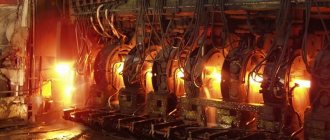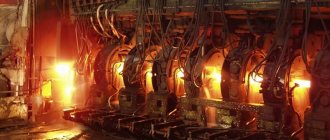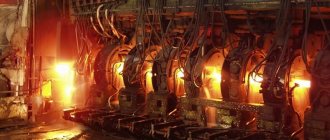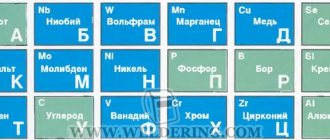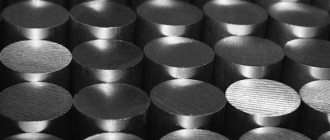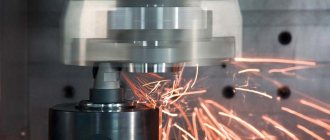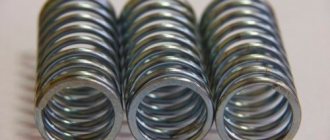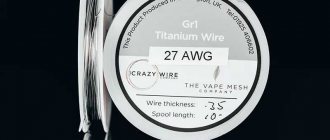We will advise you on any questions!
Have a question?
Our services
Any specialist who deals with metal is familiar with the concept of “steel grade”. Deciphering the markings of steel alloys makes it possible to get an idea of their chemical composition and physical characteristics. Understanding this marking, despite its apparent complexity, is quite simple - it is only important to know on what principle it is compiled.
Rarely does production operate without steel, so understanding its grades is extremely important
The alloy is designated by letters and numbers, which can be used to accurately determine which chemical elements it contains and in what quantity. Knowing this, as well as how each of these elements can affect the finished alloy, it is possible to determine with a high degree of probability exactly what technical characteristics are characteristic of a particular grade of steel.
Types of steels and features of their markings
Steel is an alloy of iron and carbon, the content of which is no more than 2.14%. Carbon gives the alloy hardness, but if it is in excess, the metal becomes too brittle.
One of the most important parameters by which steels are divided into different classes is the chemical composition. Among the steels according to this criterion, alloyed and carbon steels are distinguished, the latter are divided into low-carbon (carbon up to 0.25%), medium-carbon (0.25–0.6%) and high-carbon (they contain more than 0.6% carbon).
Types of steels
By including alloying elements in the steel, it can be given the required characteristics. It is in this way that, by combining the type and quantitative content of additives, grades with improved mechanical properties, corrosion resistance, magnetic and electrical characteristics are obtained. Of course, it is possible to improve the characteristics of steels using heat treatment, but alloying additives make it possible to do this more efficiently.
Based on the quantitative composition of alloying elements, low-, medium- and high-alloy alloys are distinguished. In the first alloying elements there is no more than 2.5%, in medium alloyed elements - 2.5–10%, in highly alloyed ones - more than 10%.
Steels are classified according to their purpose. Thus, there are instrumental and structural types, grades distinguished by special physical properties. Tool types are used for the production of stamping, measuring, and cutting tools, structural ones - for the production of products used in construction and mechanical engineering. Alloys with special physical properties (also called precision) are used to make products that must have special characteristics (magnetic, strength, etc.).
Classification of steels by purpose
Steels are also contrasted with each other based on their special chemical properties. Alloys of this group include stainless, scale-resistant, heat-resistant, etc. Typically, stainless steels can be corrosion-resistant and stainless steel for food - these are different categories.
In addition to useful elements, steel also contains harmful impurities, the main ones of which are sulfur and phosphorus. It also contains gases in an unbound state (oxygen and nitrogen), which negatively affects its characteristics.
If we consider the main harmful impurities, phosphorus increases the brittleness of the alloy, which is especially pronounced at low temperatures (the so-called cold brittleness), and sulfur causes cracks in metal heated to high temperatures (red brittleness). Phosphorus, among other things, significantly reduces the ductility of heated metal. Based on the quantitative content of these two elements, steels are divided into ordinary quality (no more than 0.06–0.07% sulfur and phosphorus), high-quality (up to 0.035%), high-quality (up to 0.025%) and especially high-quality (sulfur - up to 0.015%, phosphorus - up to 0.02%).
The marking of steels also indicates to what extent oxygen has been removed from their composition. According to the level of deoxidation, steels are divided into:
- calm type, designated by the letter combination “SP”;
- semi-calm - “PS”;
- boiling - “KP”.
Quenching and tempering of carbon tool steels
GOST 1435 specifies both the composition of carbon steels and their main characteristics. The carbon content in such alloys (which can be determined by their grade) ranges from 0.65 to 1.35%. In order to obtain the optimal structure and required hardness, these alloys are annealed before tool production begins. In this case, for tool steels with a hypereffectoid structure, spherodizing type annealing is performed. Heat treatment carried out using this technology leads to the appearance of granular cementite. And the cooling rate, which can be easily adjusted, allows you to obtain grains of the required size.
Steel hardening production process
After the tool is manufactured, the tool steel is subjected to hardening and subsequent tempering. This makes it possible to obtain a material of the required hardness. It is also quite easy to regulate the hardness of the finished tool; this is achieved by selecting a certain temperature for the tempering operation.
Thus, for tools that are subjected to systematic shock loads during operation, the optimal hardness is from 56 to 58 HRC, which is obtained by tempering at a temperature of 290 degrees Celsius. The most stringent requirements are imposed on the hardness of dies, engraving devices, and files (62-64 units on the HRC scale). It is achieved by tempering at a temperature of 150 to 200 degrees Celsius.
Hardening increases the hardness of carbon steels for the reason that it is with its help that it is possible to obtain the optimal structure of the alloy of iron and carbon. Variants of this structure:
- carbides with martensite;
- only martensite.
What does the steel marking mean?
It has become quite easy to decipher the brand; you just need to have certain information. Structural steels of ordinary quality and not containing alloying elements are marked with the letter combination “St”. By the number following the letters in the name of the brand, you can determine how much carbon is in such an alloy (calculated in tenths of a percent). The numbers may be followed by the letters “KP”: from them it becomes clear that this alloy has not completely gone through the deoxidation process in the furnace, and accordingly, it belongs to the boiling category. If the brand name does not contain such letters, then the steel corresponds to the calm category.
Chemical composition of carbon structural steels of ordinary quality
Structural unalloyed steel, which belongs to the quality category, has two numbers in its designation; they are used to determine the average carbon content in it (calculated in hundredths of a percent).
Before we begin to consider the grades of those steels that include alloying additives, you should understand how these additives are designated. Marking of alloy steels may include the following letter designations:
List of alloying additives used
Heat treatment of metal
Magazine “Modeler-Constructor”, No. 5, 1994, p. 24 A. Vinogradov
HEAT TREATMENT OF METAL
Modelers constantly have to face the need to increase the strength and hardness of a metal or tool, and sometimes, on the contrary, to make the metal softer and easier to process. This can be achieved by thermal action, which consists of heating the material to a certain temperature, followed by rapid or slow cooling. It is, of course, most convenient to heat parts in electric muffle furnaces; but you can also use blowtorches, gasoline and gas burners, and even the burners of home gas stoves to heat small parts. The most important condition for proper heat treatment of steels is the selection of the required temperature conditions depending on the grade of steel. But due to the fact that there is a limited number of steel grades available for free sale, it is necessary to mainly use either secondary raw materials or make some tools from others. Markings of carbon steel of ordinary quality are indicated by two letters and a number (Art. 1 - Art. 7). The figure in this case shows the approximate carbon content in hundredths of a percent. In grades of high-quality carbon steels - structural (steel 30; steel 45) and automatic steels (A12; A30) the figures also show the approximate carbon content in hundredths of a percent. The most widely used steels are tool steels (U7; U8; U8A; U10A...) - the number in their marking means the carbon content in tenths of a percent; the letter A at the end of the brand indicates that these steels have a reduced content of harmful impurities. Alloy steels are marked with letters and numbers. The letters indicate the presence of one or a whole group of alloying components in the steel: B - tungsten; G - manganese; K - cobalt; M - molybdenum; N - nickel; C—silicon; F - vanadium; X - chromium; Yu - aluminum. For example, steel grade 65X13 contains 0.065% carbon and 0.013% chromium. The most popular steel grades for tool manufacturing are given in Table 1.
Table 1.
| Tool | steel grade |
| Chisels, screwdrivers, axes, steel stamps Punches, dies, punches, chisels Cores, woodworking tools Hammers, sledgehammers, smoothers, carpentry tools Taps Needle files Files Machine hacksaw blades Hand hacksaw blades Wood hacksaws Planer knives Circular saws Sawmill frame saws Dies Blades bow saws Cross saws Longitudinal saws Cutters for hard metals Turning and planing cutters Spiral drills for wood Drills for metal Milling cutters | U7A U8; U8A U10; U10A U7 U11; P9; 9ХС У10 - У12 У10 - У13; ШХ6 Р9; P18; ShH15 U8 - U12 U8GA 9Х5ВФ 85ХФ 85ХВ 9ХС У8Га; 85HF U8GA; U10 85X U13; U13A U10; U10A 9ХС; 9Х5ВФ Р9; P18 P9; P18 |
Heat treatment of steel is divided into hardening, tempering and annealing. Hardening steel is used to increase its hardness. Soft low-carbon steels (Art. 25) and “iron” (Art. 10; Art. 20) do not heat up; carbon (steel 45; steel 50) and tool (U8; U9; U10; U10A and others) increase their hardness during hardening by three to four times. The hardening process consists of heating the steel to the hardening temperature (each brand has its own) and rapidly cooling it in oil or water. Temperature conditions for hardening are given in Table 2.
Table 2.
| Brand | Hardening C° | Holiday C° | Annealing C° | Cooling medium for quenching | Cooling medium for holiday |
| U7; U7A U8; U8A U10; U10A U11; U11A U12; U12A U13; U13A U8GA R9 R18 ShKh6 ShKh9 ShKh15 9KhS 9Kh5VF 50KhGA 60S2 60S2KhA 65S2VA 85KhV | 800 800 790 780 780 780 800 1250 1300 810 830 845 860 950 840 870 870 850 830 | 170 170 180 180 180 180 180 580 580 200 280 400 170 270 315 325 315 330 250 | 780 770 770 750 750 750 770 860 860 780 780 780 730 800 810 840 840 820 790 | water water water water water water water oil oil oil oil oil oil oil water water water water water | water, oil water, oil water, oil water, oil water, oil water, oil water, oil air in the oven air in the oven air air air air air air air air air air |
At home, in the absence of appliances, the heating temperature can be approximately determined by color. For orientation, the colors of the heat of steel products in a non-sunlit room are given in the order of their appearance depending on the temperature (in °C): dark brown (visible in the dark) 530-580 brown-red 580-650 dark red (cherry) 650- 730 cherry-red (crimson) 730-770 cherry-scarlet 770-800 light cherry-scarlet 800-830 bright red 830-870 red 870-900 orange 900-1050 dark yellow 1050-1150 light yellow 1150-1250 yellow-white 1250-1300 dazzling white St. 1300. In the hardened state, steel has great hardness, but at the same time brittleness. To give it toughness, the steel is tempered after hardening. To do this, it is heated to a temperature of 220-300°C and slowly cooled in air. At the same time, the hardness of the steel decreases somewhat, its structure changes, and it becomes more viscous. By changing the tempering temperature, different mechanical properties can be obtained. When steel is heated in air, its surface is painted in different colors, called tarnish colors. Each color of tarnish corresponds to a very specific temperature and can serve as an indicator for determining the degree of heating when tempering steel. Thermal regimes and the corresponding tarnish colors are given in Table 3.
Table 3.
| Tool | Holiday temperature, C° | Tarnish color |
| Feather drills, dies, dies and punches, cutters Cutters, taps, hacksaw blades, jigsaws, centers Nippers, chisels, metal scissors, chisels Bench and coppersmith hammers Dies and punches, knurling rollers Carpenter's chisels, plane irons, screwdrivers, crimpers Chisels carpenter's knives, marking prisms, cutter holders Wrenches, pliers, round nose pliers, pliers Saw blades for wood | 200 225 240 255 265 275 285 295 310 325 | light straw light yellow straw yellow brown-yellow red-brown purple-red violet bright blue light blue gray |
Tempering is carried out as follows: a steel part is cleaned in some place to a shine, placed in a fire and monitored for the appearance of tarnish. Tempering of the hardened part must be carried out within 24 hours after its hardening. Annealing steel serves to perform the task of reverse hardening in cases where the hardened part needs to be processed with a cutting tool, bent or cut. Annealing steel involves heating it to a temperature of 800-900°C, followed by slow cooling. After annealing, the steel can be easily processed.
* * *
Subscription popular science series “Do it yourself” (Knowledge publishing house), No. 1, 1990, p. 88, 89.
Annealing of non-ferrous metals.
When processing non-ferrous metals (embossing, hammering, etc.), sometimes it is necessary to relieve the stresses that arise during processing. To do this, it is necessary to anneal the workpiece. Annealing of non-ferrous metals is carried out at the following temperatures:
| Metal | Annealing temperature, C° | Cooling medium |
| Copper Brass L96 Brass L90-L62 Cupronickel Nickel silver Silver Aluminum Duralumin | 500 — 600 540 — 600 600 — 700 650 — 700 700 — 750 650 — 700 300 — 350 360 — 380 | Water Outdoor Outdoor Water Water Water Outdoor Oven Cooling |
Designation of steels with alloying elements
As mentioned above, the classification of steels with alloying elements includes several categories. The marking of alloy steels is compiled according to certain rules, knowledge of which allows one to quite simply determine the category of a particular alloy and the main area of its application. In the initial part of the names of such brands there are numbers (two or one) indicating the carbon content. Two numbers indicate its average content in the alloy in hundredths of a percent, and one – in tenths. There are also steels that do not have numbers at the beginning of the brand name. This means that the carbon content in these alloys is within 1%.
Example of alloy steel marking
The letters that can be seen behind the first digits of the brand name indicate what the alloy is made of. The letters that give information about a particular element in its composition may or may not be followed by numbers. If there is a number, then it determines (in whole percentages) the average content of the element indicated by the letter in the alloy, and if there is no number, it means that this element is contained in the range from 1 to 1.5%.
At the end of the marking of certain types of steel there may be the letter “A”. This suggests that this is high quality steel. These grades may include carbon steels and alloys with alloying additives in their composition. According to the classification, this category of steels includes those in which sulfur and phosphorus amount to no more than 0.03%.
Examples of marking steels of various types
Determining the grade of steel and assigning an alloy to a certain type is a task that should not cause any problems for a specialist. You don’t always have a table at hand that gives a breakdown of brand names, but the examples given below will help you figure it out.
Content of elements in common steel grades (click to enlarge)
Structural steels that do not contain alloying elements are designated by the letter combination “St”. The numbers following are the carbon content, calculated in hundredths of a percent. Low-alloy structural steels are marked somewhat differently. For example, 09G2S steel contains 0.09% carbon, and alloying additives (manganese, silicon, etc.) are contained within 2.5%. 10KhSND and 15KhSND, which are very similar in their markings, differ in different amounts of carbon, and the share of each alloying element in them is no more than 1%. That is why there are no numbers after the letters indicating each alloying element in such an alloy.
20Х, 30Х, 40Х, etc. – this is how structural alloy steels are marked; the predominant alloying element in them is chromium. The number at the beginning of such a mark is the carbon content in the alloy in question, calculated in hundredths of a percent. The letter designation of each alloying element can be followed by a number, which is used to determine its quantitative content in the alloy. If it is not there, then the specified element in the steel contains no more than 1.5%.
You can consider an example of the designation of chromium-silicon-manganese steel 30KhGSA. According to the labeling, it consists of carbon (0.3%), manganese, silicon, and chromium. It contains 0.8–1.1% of each of these elements.
Types of tool steels
All grades of steel for the production of tools are divided into 5 main groups.
Heat resistant and viscous
As a rule, these are hyper- and hypoeutectoid steels, which contain molybdenum, tungsten and chromium. The carbon content in such alloyed tool steels corresponds to medium and low values.
Highly hard and viscous, non-heat resistant
Such alloys are distinguished by a low content of alloyed elements and a medium content of carbon. They are also characterized by low hardenability.
High hardness, heat resistant and wear resistant
These grades include high-speed alloy steels (the content of alloying elements in them is very high), as well as alloys with a ledeburite structure containing more than 3% carbon.
Wear resistant, high hardness and medium heat resistance
These are steels with a hypereutectoid and ledeburite structure, which contain 2-3% carbon and 5 to 12% chromium.
High hardness and non-heat resistant
The composition of such tool steels with a hypereutectoid structure either does not contain alloyed elements at all, or contains them in insignificant quantities. The level of hardness of such alloys is ensured by the large amount of carbon in their composition.
Classification of tool steel in the form of a diagram
An important parameter of tool steels is their level of hardness. As a rule, it is undesirable to use high-hardness steels for the production of tools that are subject to shock loads during operation. This is explained by the fact that such alloys have low viscosity and significant fragility, which can lead to breakage of the tool that is made from them.
Based on the level of hardness, two categories of tool steels can be distinguished:
- with a high level of viscosity (carbon content in the range of 0.4-0.7%);
- with high wear resistance and hardness (they contain more carbon: 0.7-1.5%).
High hard steel hydraulic hammer part
Steel grades are also classified according to the degree of their hardenability. According to this criterion, alloy steels with increased (possible hardening diameter 80-100 mm), high (50-80 mm) and low (10-25 mm) hardenability are distinguished.
How to decipher steel markings?
To make deciphering the designations of different types of steels easy, you should know well what they are. Certain categories of steel have special markings. They are usually designated by certain letters, which allows you to immediately understand both the purpose of the metal in question and its approximate composition. Let's look at some of these brands and understand their designation.
Properties and purpose of structural alloy steels
Structural steels specially intended for the manufacture of bearings can be recognized by the letter “Ш”; this letter is placed at the very beginning of their marking. After it in the brand name there is a letter designation of the corresponding alloying additives, as well as numbers by which the quantitative content of these additives is determined. Thus, steel grades ShKh4 and ShKh15, in addition to iron and carbon, contain chromium in amounts of 0.4 and 1.5%, respectively.
The letter “K”, which appears after the first digits in the brand name, indicating the quantitative carbon content, denotes structural non-alloy steels used for the production of vessels and steam boilers operating under high pressure (20K, 22K, etc.).
High-quality alloy steels, which have improved casting properties, can be recognized by the letter “L” at the very end of the marking (35ХМЛ, 40ХЛ, etc.).
Deciphering the grades of construction steel can cause some difficulty if you do not know the specifics of the markings. Alloys of this category are designated by the letter “C”, which is placed at the very beginning. The numbers following it indicate the minimum yield strength. These brands also use additional letter designations:
- letter T – heat-strengthened rolled products;
- letter K – steel, characterized by increased corrosion resistance;
- letter D is an alloy characterized by a high copper content (S345T, S390K, etc.).
Unalloyed steels belonging to the tool category are designated by the letter “U”; it is affixed at the beginning of their marking. The number following this letter expresses the quantitative carbon content in the alloy in question. Steels of this category can be high-quality and high-quality (they can be identified by the letter “A”, it is placed at the end of the brand name). Their marking may contain the letter “G”, which means a high content of manganese (U7, U8, U8A, U8GA, etc.).
Tool steels containing alloying elements in their composition are marked similarly to alloyed structural steels (KhVG, 9KhVG, etc.).
Composition of alloy tool steels (%)
The marking of those steels that are included in the high-speed cutting category begins with the letter “P”, followed by numbers indicating the quantitative content of tungsten. Otherwise, brands of such alloys are named according to the standard principle: letters denoting the element, and, accordingly, numbers reflecting its quantitative content. The designation of such steels does not indicate chromium, since its standard content in them is about 4%, as well as carbon, the amount of which is proportional to the vanadium content. If the amount of vanadium exceeds 2.5%, then its letter designation and quantitative content are affixed at the very end of the marking (З9, Р18, Р6М5Ф3, etc.).
The influence of some additives on the properties of steel
Unalloyed steels belonging to the electrical category are marked in a special way (they are also often called pure technical iron). The low electrical resistance of such metals is ensured due to the fact that their composition is characterized by a minimum carbon content - less than 0.04%. There are no letters in the designation of grades of such steels, only numbers: 10880, 20880, etc. The first digit indicates the classification by type of processing: hot-rolled or forged - 1, calibrated - 2. The second digit is associated with the category of the aging coefficient: 0 - non-standardized, 1 - normalized The third digit indicates the group to which this steel belongs according to the standardized characteristic taken as the main one. The value of the standardized characteristic itself is determined from the fourth and fifth digits.
The principles by which the designation of steel alloys is carried out were developed back in the Soviet period, but to this day they are successfully used not only in Russia, but also in the CIS countries. Having information about a particular grade of steel, you can not only determine its chemical composition, but also effectively select metals with the required characteristics.
Understanding this issue is important both for specialists who develop and design various metal structures, and for those who often work with various steels and manufacture parts from them for various purposes.
